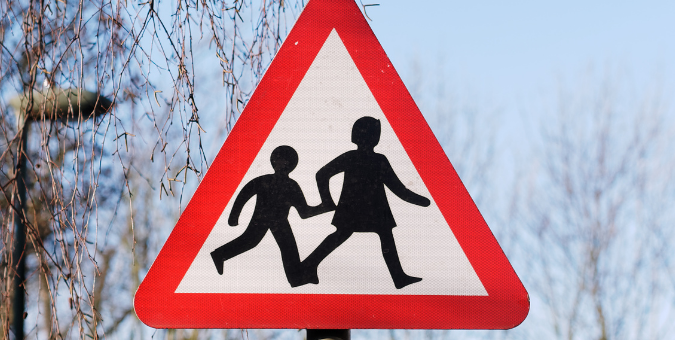
Modern life means we are all very busy, and looking for ways to save time anywhere we can.
It’s very easy to pop the children in the car and drive them to school, even though parking can be a nightmare, but have you thought about how your children could benefit from walking to school?
Even making the time to do this once a week can benefit your children by helping to build their road sense and adding regular exercise into their routine.
What the Highway Code now says about walking
In January 2022 the Highway Code was updated to introduce a responsibility for drivers and cyclists to give way to walkers who are waiting to cross a side road or a junction. It also gives priority to walkers when waiting to cross a zebra crossing, whereas the previous rule only gave priority to walkers once on the crossing. Drivers and cyclists now have much more of a responsibility where walkers are concerned.
You can access the highway code at www.gov.uk/highway-code or it is available to buy online or in shops. There is further road safety advice available from Brake at www.brake.org.uk.
Walking to school gives children the chance to learn the rules, and abide by them, so that they can stay safe and avoid accidents.
Advantages of walking to school
The advantages of walking to school include:
- Walking gives the children regular exercise
- Allows you to spend more time with your children
- Develops and improves road sense
- Gets children used to travelling independently
- Avoids the risk of car accidents
- Reduces congestion of traffic at school gates and local roads, which again avoids accidents
We have all experienced the trials of getting children up for school in the morning and the reality of then having to walk to school can be daunting. However, there are schemes which you can organise to make it easier for families to participate.
Such as:
- Park and stride – park away from the school and walk the rest of the way, this will also help with the parking nightmare if you are not having to park near to the school
- Organise a walking bus – you can do this in two ways, a formal walk where parents take it in turns to walk a group of children to school or informally where a group of older children walk to school together
- Involve the school and arrange one particular day a week when all the children who are able can walk to school
- Create an incentive scheme for the best walkers
When walking to school with other children this can act as a social event.
There are a number of sites which give very helpful tips
Keeping children safe while they walk to school
When walking to school we need to ensure the children will be safe and here are a few tips:
- Choose a route with the least roads to cross
- Always use a pedestrian or zebra crossing if available
- Look both ways when crossing the road
- Do not assume you have been seen by the drivers – try and make eye contact
- Make sure you are visible and on dark mornings make sure you have reflective clothing
- Keep your head up and be aware of your surroundings and where you are walking
- Put your phone and iPod away, they are a distraction which could cause an accident
- Always cross with an adult if you are being accompanied to school
If you have to walk where there are no pavements there are different rules depending on how many in the group.
Small groups should keep to the right-hand side of the road so you can see oncoming traffic; you should keep close to the side of the road and walk in single file; crossing to the opposite side of the road when approaching a sharp bend may be safer.
For larger groups, whether or not on organised walks, the group should keep to the left and there should be a look out at the front and back of the group wearing fluorescent clothes in daylight and reflective clothes in the dark. At night the front walker should have a white light, the rear walker should have a red light and walkers on the outside of the group should also wear reflective clothing and carry lights.
What age should my child start walking to school by themselves?
There is no legal age when your child can start going to school by themselves, though some schools advise that pupils under eight shouldn’t walk home alone. It will also depend on where the school is in relation to your home and how many roads there are to cross and how busy they are.
It can be very helpful to plan a school route which you can do with the child. Make sure the route you choose has regular pedestrian or zebra crossings and takes the child the safest way to school.
It is up to you to decide when your child is at an age to walk to school on his/her own, but it should be a decision you make with the child to ensure they have the confidence to walk alone to school.
Walk to School Week
Walk to school week is from 16 to the 20 May 2022 and it is hoped that as many children as possible will take part and is one of the reasons why I have put together the above tips and information. If your children are planning to walk to school you can find more information and tips, as well as challenges and themes which makes walking much more interesting, here.
I hope I have helped to convince you to have a go at walking to school while staying safe!


















